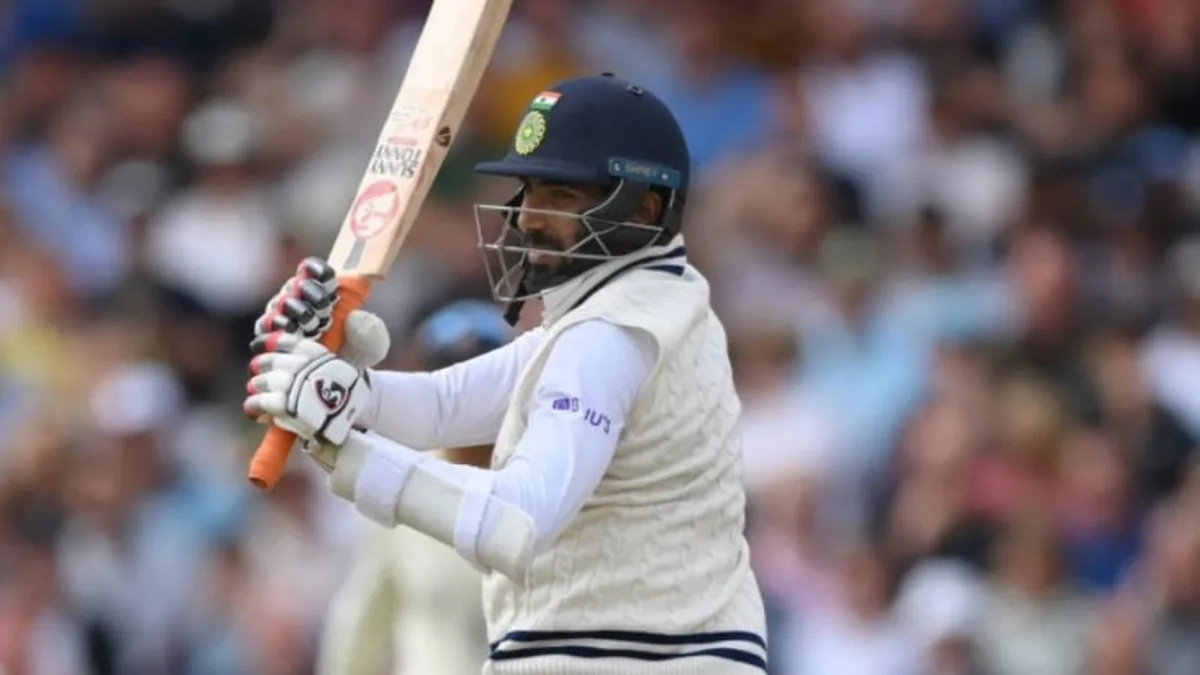
India’s last three wickets added 73 runs in the first innings, and in a country where the tail once proved to be their nemesis, India finally have some hope to build upon, writes Rohit Sankar.
Sign up to The Cricket Draft, powered by Wisden, an all-new, free-to-play fantasy game running alongside The Hundred, to win prizes and compete with your friends.
“Try one new thing per day, they said”
Jasprit Bumrah’s tweet read a few hours after he smashed a maiden first-class fifty in the pink-ball warm-up game at Sydney in late 2020. It’s worth mentioning that his Test average was 2.90 after 21 innings at that point. It’s also worth mentioning that 20 wickets fell on a low-scoring day in that game. It’s again worth mentioning that he shared a 71-run stand with Mohammed Siraj for the last wicket when India were 123-9 at one point.
A few months later, Sachin Tendulkar tweets about Bumrah’s pull shot, hailing it the shot of Bumrah’s life. There’s little to argue about. Rocking back quickly, Bumrah is all class as he pulls Sam Curran over the mid-wicket boundary for six in the first England-India Test.
It’s a shot India’s tail-enders don’t play. It’s a shot that scoffs at the batting average of 8.9 that India’s last three batters boast of in Test cricket since 2019. It’s a shot that leads to India’s tail comfortably outperforming England’s in the first innings, the opposite of what unfolded in 2018, when the lower-order was arguably the difference between the sides.
Try one new thing per day, they said.😂 pic.twitter.com/Yozpazpoak
— Jasprit Bumrah (@Jaspritbumrah93) December 11, 2020
There are never-ending questions raised about India’s tail-enders. That average mentioned earlier for the last three batters since 2019 is the worst among Test teams after Bangladesh and Afghanistan. For one of the best Test teams in the world, that’s a major chink in the armour that teams the world over would look to exploit.
India have bowlers who bat too. One of them, on the bench for this Test, has three Test centuries from No.8. Another who isn’t in the squad, but is arguably one of the best swing bowlers India have seen, hit half-centuries in either innings at this very ground seven years back.
The problem for India is more about the make-up of their side and whether they want to compromise on the bowling strength to add weight to the lower order. Ishant Sharma’s last-minute injury paved way for Shardul Thakur (first-class average of 16.58 and highest score of 87) to play, but he isn’t among India’s best four fast bowlers in this format.
The four that are average 8.25 (Ishant), 11.19 (Mohammad Shami), 9.75 (Siraj) and 2.26 (Bumrah) in Test cricket with the bat. On a green top, India will likely have to think twice before going in with those four in the line-up, not because they aren’t the best bowlers to exploit the conditions, but because their batting potential is so low that each of them will likely be No.11 in most other Test teams.
It’s also important to note that this very group, a few others included, has made India’s pace attack one of the best in Test cricket at the moment. Since 2019, India’s quicks average 22.51 with the ball, the best among all teams if you ignore newbies Ireland, who have just two Tests under the belt. So good is the bowling attack that compromising even one to boost up the batting is not really worth it.
The alternative is what’s in action right now: making the best use of what you have. This has seen the tail show more composure than ever before. Siraj holding on at one end to help Ashwin get to his hundred in the home Test against England, Shami playing two cracking shots – a square cut and a pull-off Tim Southee in the WTC final and the Bumrah onslaught on Curran, one that included fours either side of that ravishing pull for six, are examples in this regard.
It’s still a far cry from an ideal group of tailenders for modern-day Test cricket. But, if this group can put in the odd fight, show more willingness to put a price on their wicket and also score runs, it will give India’s Test side a massive boost. In a game of small margins, that could well be the difference between an ordinary tour and a great one.








